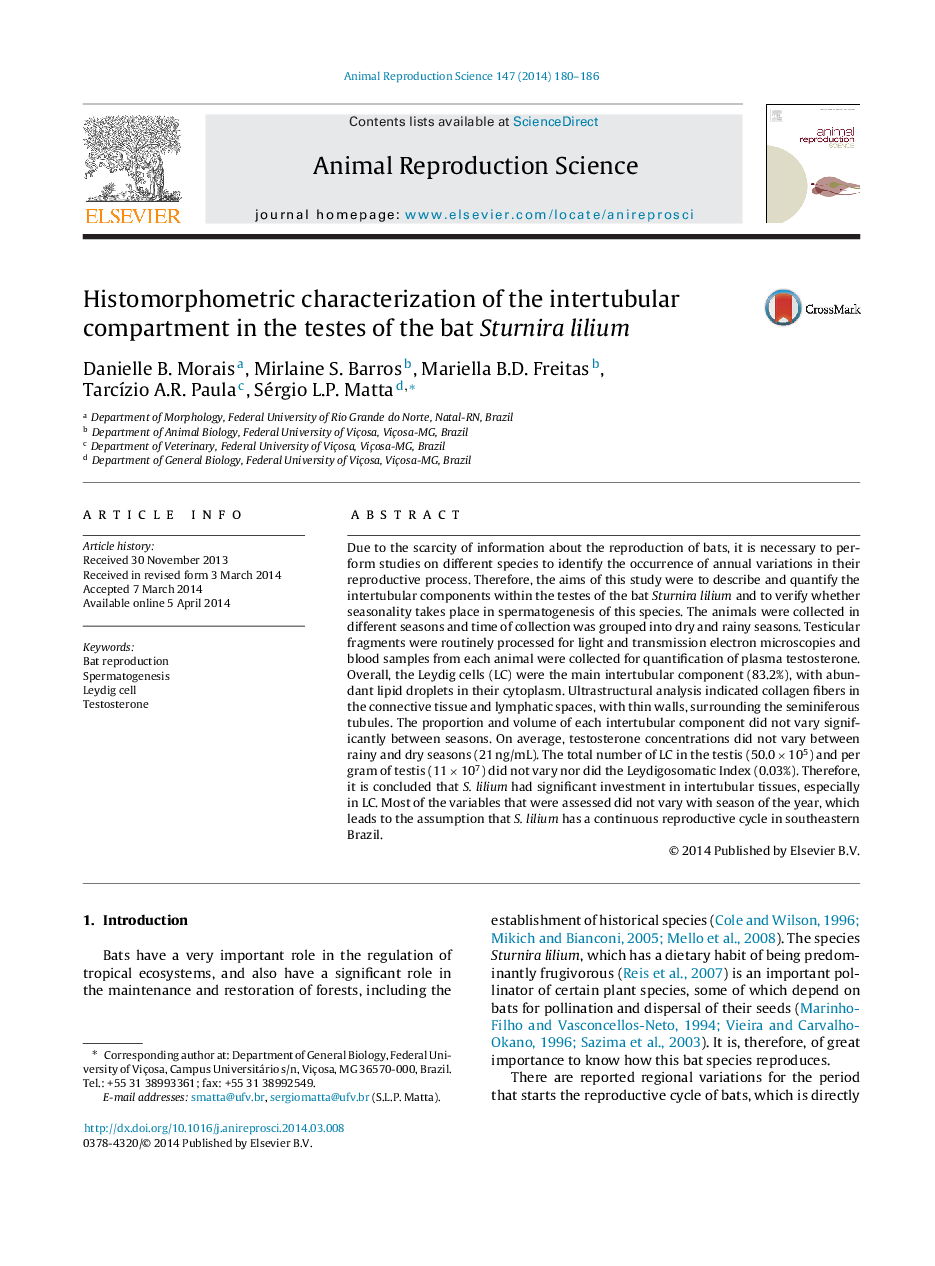| کد مقاله | کد نشریه | سال انتشار | مقاله انگلیسی | نسخه تمام متن |
|---|---|---|---|---|
| 2072817 | 1544734 | 2014 | 7 صفحه PDF | دانلود رایگان |

• Sturnira lilium presents a great investment in intertubular tissue, especially in Leydig cells.
• The plasmatic testosterone and Leydig cells morphometry showed no significant changes between rainy and dry seasons.
• S. lilium shows a reproductive cycle continuous in southeastern Brazil.
Due to the scarcity of information about the reproduction of bats, it is necessary to perform studies on different species to identify the occurrence of annual variations in their reproductive process. Therefore, the aims of this study were to describe and quantify the intertubular components within the testes of the bat Sturnira lilium and to verify whether seasonality takes place in spermatogenesis of this species. The animals were collected in different seasons and time of collection was grouped into dry and rainy seasons. Testicular fragments were routinely processed for light and transmission electron microscopies and blood samples from each animal were collected for quantification of plasma testosterone. Overall, the Leydig cells (LC) were the main intertubular component (83.2%), with abundant lipid droplets in their cytoplasm. Ultrastructural analysis indicated collagen fibers in the connective tissue and lymphatic spaces, with thin walls, surrounding the seminiferous tubules. The proportion and volume of each intertubular component did not vary significantly between seasons. On average, testosterone concentrations did not vary between rainy and dry seasons (21 ng/mL). The total number of LC in the testis (50.0 × 105) and per gram of testis (11 × 107) did not vary nor did the Leydigosomatic Index (0.03%). Therefore, it is concluded that S. lilium had significant investment in intertubular tissues, especially in LC. Most of the variables that were assessed did not vary with season of the year, which leads to the assumption that S. lilium has a continuous reproductive cycle in southeastern Brazil.
Journal: Animal Reproduction Science - Volume 147, Issues 3–4, 30 June 2014, Pages 180–186